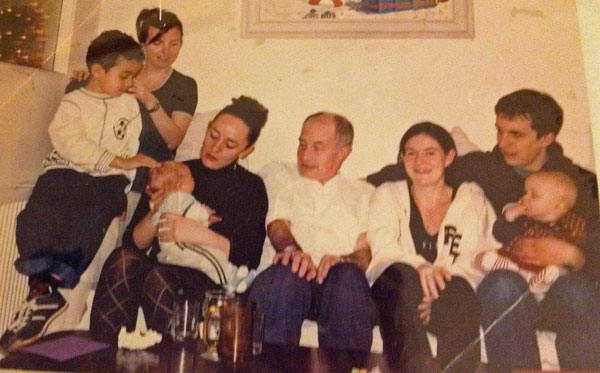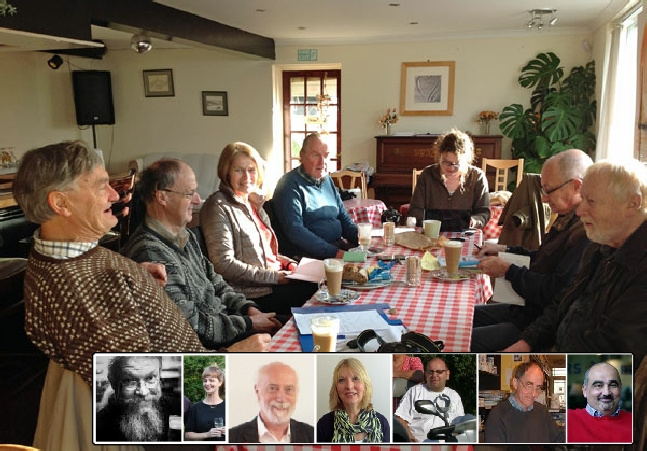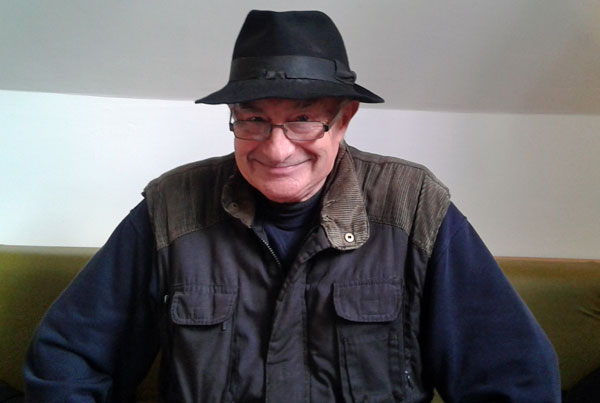It is nearly two years since Kenneth Bird and his co-founders launched Rye News. Very few community newspapers exist and building a team of volunteers, who are able to sniff out a story, write good content, create and edit images, understand the website and online marketing has taken time. But Kenneth is happy to have got this far and says “one of the key differences of our community newspaper is that it is being run by volunteers and is a non-profit enterprise with the purpose of benefiting the local community.” As with any start-up those involved might describe the process as pain and pleasure in equal measure but there is no doubting the collective commitment and drive to make it work.
Tony Nunn and his wife Jane – who both have a wealth of experience in the industry worked tirelessly to set the foundations for a quality online newspaper. When they left, Charlie Harkness, who was already a contributor took over as Editor.
Charles Harkness, Editor
As a novice, interviewing a seasoned journalist/editor, civil servant and psychotherapist, whose job titles have included “Grand Imperial Father” and Whitehall Mandarin, was a rather unnerving prospect, but I wanted to find out more about the man in a black hat who can be seen lurking in the background at most events in Rye and who admits to having an MI5 file.
Described by a Government researcher as a “maven” – a Yiddish term for someone who collects knowledge and shares it, often solving others’ problems and known in Whitehall as “the big picture man”, Charlie sees his role at Rye News as “putting together a jigsaw, making it read as a coherent story and being aware of the consequences!” The consequences are sometimes controversial but he believes that as few comments as possible should be turned down because they open up subjects for debate.
Charlie was raised by two widows as both his father and grandfather had been killed in their 20s in world wars, so he “had three lives to live – as they never had theirs”. But his life has been precarious too as, being premature in the London Blitz, he was not expected to live, was later told he would not survive his teens and his lungs now are less than a third of what they could be. But he’s had four careers, nearly had a fifth (as a “shrink”) and graduated from four universities.
His father was killed on active service and the RAF Benevolent Fund paid for him to go to go to Cranleigh private school. “I spent a lot of time in the sanatorium and hated sport so the academic side of life was important to me. I had to spend a lot of time blowing up balloons to increase my lung capacity which has given me a phobia about them!”
He went on to Selwyn College, Cambridge which “was right next door to Newnham women’s college”, and as most of the interesting women worked on ‘Varsity’ newspaper, that became his foray into journalism. By the time he graduated he was married (his wife worked at his bank and dealt with his overdraft) with one child and another due. “My tutor was not well pleased but I scraped through with a special (no honours)”.
After graduation he worked for the Kent Messenger, followed by a move to the Northern Echo in Darlington where “the wind blew straight across from Moscow”. He lived in a new town prefab house which he later discovered had been built upside down which explained why nothing had ever worked and it had to be rebuilt!
The stress of working on a morning paper with unsocial hours led him to move to the Evening Gazette in Middlesborough where he was in charge of special features and all supplements. During this period he became a shop steward (Father of the Chapel) with the National Union of Journalists (NUJ) and later became Grand Imperial Father of the Chapel for Thomson Newspapers.
In the ’70s he was Deputy General Secretary of the NUJ and the in the ’80s communications chief for the Post Office Engineering Union (POEU). “During that second period I stood for election as a Labour Councillor in both Ealing and Camden/Highgate and in Camden I missed by 40 votes after three recounts”. The POEU seconded him to the Labour Party where he worked as a Press Officer during the 1984 election with Michael Foot and then with Neil Kinnock in 1987 and also learned a lot about the workings of parliament.
After 14 years working for two unions, Charlie moved into management consultancy and at the same time studied in the evenings for an MBA. By this time he was living with his eventual second wife, Sheila who later introduced him to Rye and they had a son, Tom, who is now 33 and Charlie gained a stepdaughter. (The four children and three of the four grandchildren are shown right). An MA in marketing followed nearly 10 years later.
Made redundant from the consultancy, he applied for an open competition to work as a senior civil servant and was one of the successful 17 recruited from around 1,500 applicants. He hadn’t expected to get the job as his union activity had resulted in an MI5 file and when asked by the interview panel “what will you do if you don’t get this job” he replied “I don’t know – probably organised crime”. He said “I believe that got me the job as they knew black humour was a necessity in the Civil Service”.
As Deputy Director of Communications he worked in Deputy Prime Minister Prescott’s department after Blair’s election running marketing campaigns and other postings took him to the Cabinet Office, DETR and DEFRA.
In the 2005 Richard Layard’s book “Happiness” was causing a stir about the paradox at the heart of our lives – most people want more income yet, as societies become richer, they do not become happier, and Charlie found himself in the Whitehall Wellbeing group looking at behaviour change across the Civil Service and in government policies. During that period he studied part time to become a psychotherapist which later faltered when he “lost his empathic side” and some of his hearing. After a second divorce, and moving from Camden Town after nearly 30 years, he found his way to Rye and to Rye News. He’s also a town councillor and active in St Mary’s church as well.
Meet the Team
Charlie leads an editorial team who can be found every Saturday morning at 10am at the Queen Adelaide pub by the Ferry Road level crossing planning the stories for the week and they then head off around the town with their notebooks. His production chief John Minter, who juggles paid work as a film extra, invigilating school exams and writing internet blog posts with writing for and publishing Rye News, provides a political balance between a Guardian reader (Charlie) and a Telegraph reader’s (John) take on life. The team has a mix of Ryers and “newcomers” – some employed who fit voluntary work around their jobs and others who are retired. Background information on the team bringing you Rye News can be seen here.
Help us take Rye News to the next level
Charlie would love to recruit new contributors, whether providing information on what might become a story or if you have a background in journalism, copy writing, editing, web marketing, updating events – email him at info@ryenews.org.uk
The team have plans to develop the publication further but in order to maintain it and survive in the longer term funds will be needed. Some people will need to be paid for routine administrative work and also for specialist skills, technological support and other services needed to run the business.
Rye News was set up with the support of grants from the Wind Farm and Awards for All Lottery. One condition of funding is that it must seek to become self-sustaining in future. The team are therefore asking the community itself to support them, both businesses and residents. We are offering businesses the opportunity to sponsor us which includes a three month advertisement on the site (currently attracting around 4,500 users a month – both local residents and out-of-towners probably planning a visit). If you enjoy reading Rye News and would like to donate or sponsor us, find out more here.




